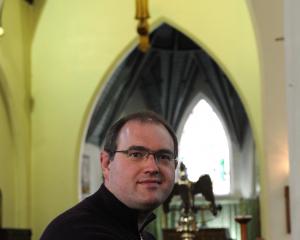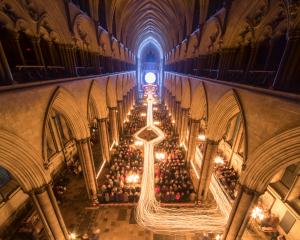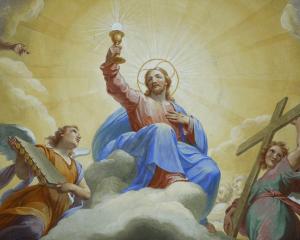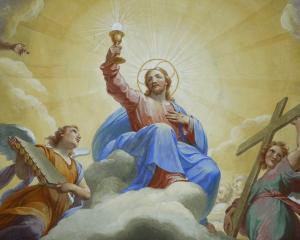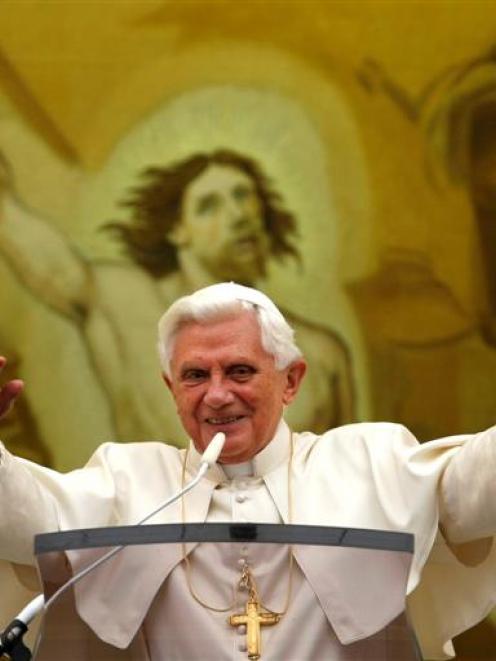
Another Easter come and gone, another holiday, another chocolate-bunnied reminder of spring on the other side of the world.
And for Christians, another remembrance of Jesus' cruel execution in Palestine nearly 2000 years ago, followed by another celebration of the vindication of his life and teaching as the despair of his earliest followers turned, against all expectations, to triumph.
They came to see the world and their place in it in a radically new light.
Traditionally, the trigger for this dramatic turnaround was Jesus' resurrection.
In the secular present, that is increasingly a turn-off - how could a dead-and-buried body suddenly spring back to life? For Muslims, the Quran solves that by saying Jesus never died on the cross in the first place.
So does a powerful recent play by Briton Howard Brenton called Paul.
The Christian New Testament describes it otherwise.
It must always be remembered, however, that the writers tell the story in a way that was quite credible 2000 years ago; but if they could be catapulted into our times and relate events through 21st-century eyes, they would tell it quite differently.
Yet the central message of love triumphant would come through as strongly as ever.
In New Testament times, for example, people in Palestine took for granted the brooding presence of a theistic God, all-powerful and ever poised to intervene in human affairs.
To such a God, reviving a corpse would be no problem at all: to think otherwise would be to limit his power.
Further, an influential faction in Judaism already believed in the resurrection of the body.
For the faithful, that was how good would finally triumph over evil.
So in Matthew's Easter narrative, Jesus' resurrection was not even a one-off: it was accompanied by a host of cadavers emerging from their graves and appearing in Jerusalem.
In short, resurrection not only seemed believable but, more importantly, it was a symbol of vindication and hope.
As metaphor, that still applies.
Unfortunately, however, Jesus' resurrection has become so bogged down in literalism that to many in our secular century the very idea is more hindrance than help.
I have found a different approach more useful in making sense of Easter.
It begins by recognising that the Easter narratives in the Bible (there are several, and they don't all match up) are not so much verifiable descriptions of physical events as interpretations of what Jesus' first followers experienced.
Written after 40 and more years of reflection, they are intended to convey the essential meaning of Jesus' life and the impact he continued to have on his followers.
In communicating this, the writers could not help but draw on their 1st-century world-view, and especially their Jewish religious heritage, its concept of God, and then-current notions of resurrection.
But they exploded this core way beyond Jewry.
In the months and years beyond that first Easter, the emphasis on Jesus as a Jew in history gradually fades and a new understanding, that of the universal Christ, takes shape.
In broad outline, you could say that at Easter Jesus was crucified, but it was the Christ who arose.
That is a distinction too seldom made - but make it, and the secular imagination can enter into the Easter experience without all the problems of a resuscitated corpse that literalism throws up.
It also explains why the religion that grew out of the Easter experience is called Christianity, and not Jesusism or something similar.
For the title Christ is much more than an alternative name for Jesus.
In the fertile imagination of the apostle Paul, and without detracting one whit from Jesus himself, the Christ became Christianity's central symbol of new beginnings, fulfilment and hope.
Mention of the Christ (meaning annointed one) takes us into the realm of religious myth.
That does not mean a flight into fantasy: biblical scholar Karen Armstrong makes that clear when she describes a valid religious myth as one that forces us to change our minds and hearts, gives us new hope, and compels us to live more fully.
Entering into such a myth engages the imagination, quickens the emotions, and changes the way people see not only themselves, but also the world around them.
In a word, it transforms.
Every enduring religion has such a myth, and Christianity's is centred on the post-Easter Christ.
For while Jesus the man is still widely admired as a wise teacher and superlative role model, it is the Christ who, for Christians, is the principle, presence and power of transforming love.
•Ian Harris is a journalist and commentator




